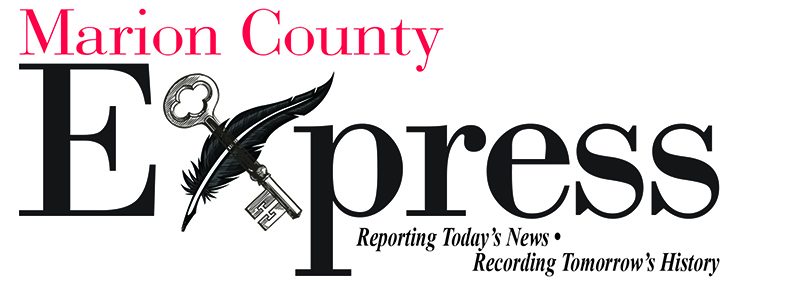By Daniel P. Finney
Today’s assignment: Write a story about an important historical figure for Black History Month.
I pick Johnny Bright. Bright was a genial, hard-working, and gifted multi-sport athlete from Fort Wayne, Indiana. He played football and basketball, ran track, and was an ace fast-pitch softball player.
Bright twice led his Central High School basketball teams to the state semifinals. He led his football team to the city title and competed in five separate track and field events. In today’s world, he would have the top coaches in the country lined up at his door trying to get Bright to come to their school. But this was the 1940s and racism was both overt and accepted.
Purdue showed no interest. Notre Dame didn’t allow Black players. Indiana said they already had enough Black running backs. Nick Brenner coached track at Drake and was an Indiana native. He followed Bright’s athletic accomplishments. He wooed Bright to Drake on a track scholarship, but Bright insisted he be able to try out for football and basketball. The NCAA didn’t let freshmen play varsity in those days. By his sophomore year, he was a three-sport star at Drake. He lettered in both track and basketball. He pole-vaulted 13 feet and landed a high jump of 6 feet, 2 inches. Bright shined on the gridiron. He passed for 975 yards and ran for another 975 to lead the nation in total offense. He dropped track and basketball his junior year and again led the nation in total offense with 1,232 rushing yards and 1,168 passing yards.
Drake was 5-0 on Oct. 20, 1951, when the Bulldogs traveled to Stillwater, Oklahoma to play Oklahoma A&M, now known as Oklahoma State.
Bright again led the country in total offense and a Heisman Trophy contender. Oklahoma A&M targeted Bright with dirty plays. Hits knocked Bright unconscious three times in the first seven minutes of the game. There were no concussion protocols. Helmets didn’t even have facemasks. Bright took the snap and handed it off to fullback Gene Macomber, who ran with the ball. A&M defensive lineman Wilbanks Smith ignored the ball and zeroed in on Bright. He leaped off the turf and smashed his forearm and elbow in Bright’s face. The blow broke Bright’s lower jaw. He stayed in the game for a few more plays, throwing a 61-year touchdown pass. Bright eventually left the game. Drake lost 27-14. Two Des Moines Register photographers Don Ultang and John Robinson captured the injustice in six photos that exposed the assault on the top of the Sunday Register’s sports section.
The pictures brought a national outcry over the blatant act of racism and poor sportsmanship.
Editorials called for the expulsion of Smith and the firing of A&M coach J.B. Whitworth.
Neither the NCAA nor the Missouri Valley Conference issued punishments. Whitworth apologized to Bright in writing but denied he ordered the hit or that it was racially motivated. Smith died in 2020. He maintained the hit was not racially motivated and defended its savagery, noting that a forearm to the head was legal in 1951. Drake left the Missouri Valley Conference and did not return until 1973.
Doctors wired Bright’s jaw shut. They removed a tooth so he could be fed by a tube while he healed.
The Chicago Bears commissioned two special helmets to protect Bright’s jaw, including one of the first facemasks in football. But Bright played only sparingly in Drake’s last three games. He finished fifth in the Heisman voting.
The Philadelphia Eagles drafted him with their first-round pick in 1952. Bright might have become the first Black superstar in the NFL, five years before Jim Brown signed with the Cleveland Browns. But the Eagles low-balled Bright on salary. He worried about being the Eagles’ first Black player and the influx of Southern players into the NFL. If the A&M game taught Bright anything, it was that referees would not protect him from foul play. Bright decided to play in Canada, playing 13 seasons for teams in Calgary and Edmonton. He retired the league’s all-time leading rusher. Though his record has since been eclipsed twice, Bright is still mentioned as one of the top three Canadian Football League players of all time.
Bright earned a bachelor’s degree in education from Drake. He put it to use as a teacher, coach, and school administrator in Edmonton, where he settled with his high school sweetheart and raised a son and three daughters. Bright dedicated his life to his students. He sought to fuel their inner light.
Students recalled his kindness. He said hello to his students by name. He made them feel important.
“You didn’t want to disappoint him,” said Duane Deby, a student of Bright’s in junior high. Bright died of a heart attack during knee surgery in 1983. He was 53. Bright’s legacy as an educator led to an elementary school and a sports park named in his honor in Edmonton. A two-year college dedicated to providing a non-traditional path to a degree at Drake carries Bright’s name, as does the football field at Drake Stadium. Bright refused to let that grim day in 1951 define his life. He so rarely talked about the incident that one of his daughters didn’t learn about it until someone gave her a book with the photos of the dirty hit. Bright was so much more than a football player. Losing a shot at the Heisman Trophy is terrible. But it would have been a tragedy if Bright had never taken to the classroom as a teacher, mentor, and leader of students.
“We are all students, and we are all teachers when we thirst for knowledge,” Bright said in 1982. “I want my kids to say our school is the best. More importantly, I want them to say, ‘I am the best.’ I want each of my kids to have self-respect. I want them to be champions.”














